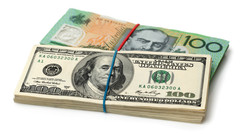Boost in U.S. Dollar and Job Growth
The U.S. dollar index leapt to an impressive seven-week high during a comprehensive rally on Friday. This uptick was triggered by data illustrating an unanticipated increase in job additions in January, thereby diminishing the likelihood of the Federal Reserve performing imminent interest rate cuts.
Impressive Raise in Nonfarm Payrolls
A rise in nonfarm payrolls by 353,000 in the previous month exceeded economic experts' predictions of an increase of 180,000. Furthermore, there was a boost in average hourly earnings by 0.6%, following a 0.4% rise in December.
Drops in Chance for Rate Cuts
Comments by Marc Chandler, chief market strategist at Bannockburn Global Forex in New York, highlighted the unexpected triumph in job growth, leading to the market further slashing the probability of a March cut and reducing the quantity of anticipated cuts the Federal Reserve could make this year.
A Shift in Treasury Yields
During the previous week, falling Treasury yields resulted in a corresponding drop in the dollar, despite Federal Reserve Chair Jerome Powell's assertion that a March rate cut was improbable. However, Treasury yields saw an increase, due in part to the surge in regional bank stocks after a severe two-day downswing.
A Rethink in Dollar and Treasury Positions
In the face of a strong January for the greenback coupled with increased Treasury yields, the market has seen some repositioning. Following the release of recent data, Chandler suggested a favourable dollar atmosphere might be on the horizon.
Changes in Currency Values
Rising to 148.58 yen, and a seven-week high of 104.04 for the dollar index, the US currency showed considerable strength. Simultaneously, the euro dipped slightly to $1.07810, and Sterling fell to a low not seen since mid-January at $1.26140. The Australian dollar also saw its value decrease, dipping to a 10-week low of $0.65035.
Projected Rate Cuts and Their Probability
According to the FedWatch Tool by CME Group, traders currently estimate a 21% chance of a rate cut in March dropping from 38% on the previous day, and a 75% likelihood for May, which is also down from 94%.





